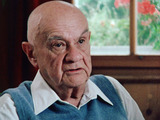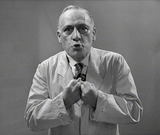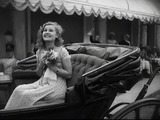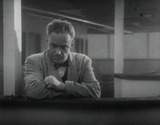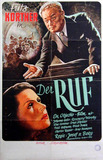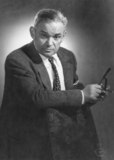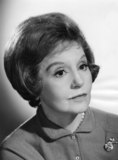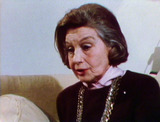Die versunkenen Welten des Roman Vishniac (Documentary film, Switzerland 1978, excerpt)
Documentary by Erwin Leiser about the photographer who chronicled Jewish historyRoman Vishniac, born in 1897 in Saint Petersburg, was a microbiologist, inventor, philosopher, university lecturer, art historian – and photographer. He already took his first photographs in 1906 showing the leg of a cockroach seen through a microscope.
Film clip from Das Testament des Dr. Mabuse [The Testament of Dr. Mabuse] (1932/33)
The third of Fritz Lang’s films about the genius criminal Dr. Mabuse was also his last German directorial work before the Second World War.
Film clip from Der Kongress tanzt [The Congress Dances] (1931)
During the Vienna Congress, at which European ambassadors are negotiating the realignment of the continent, not only Prince Metternich (Conrad Veidt) has his own agenda; glovemaker Christel (Lilian Harvey) also has an ambitious strategy for selling her gloves. But then she falls in love with the Russian Czar Alexander (Willy Fritsch), who has her picked up in his coach and taken to a villa.
Film clip from Der Ruf [The Last Illusion] by Fritz Kortner
Under the direction of Josef von Bákys and based on the screenplay by Fritz Kortner, the remigration film Der Ruf was made in 1948/1949. Kortner's own experiences undoubtedly flowed into this work and make the film a personal document of the exiled actor.
Film poster for Der Ruf [The Last Illusion] (1949)
After his return from exile in the US, actor Fritz Kortner wrote the screenplay for this semi-autobiographical film: a film document of German remigration.After 15 years of exile in the US, Professor Mauthner returns to Germany against all reservations expressed by his fellow exiles.
Interview with Fritz Kortner (SFB, 1957)
Until the end of 1956, Fritz Kortner worked on his staging of Hamlet in Berlin for the Schillertheater (premiere 13 March 1957). He was asked about this in an eight-minute radio interview.
Interview with Valeska Gert (1977)
Excerpt from Volker Schlöndorff's documentary film Nur zum Spaß, nur zum Spiel – Kaleidoskop Valeska GertThe dancer and actress Valeska Gert revolutionised the performing arts in 1920s Berlin and Paris. In Volker Schlöndorff's documentary Nur zum Spaß, nur zum Spiel – Kaleidoskop Valeska Gert from the year 1977, the 84-year-old artist described herself as “really and to be precise the wildest act back then”.
Radio interview with Elisabeth Bergner (SFB, 1968)
Elisabeth Bergner, exiled in London and faced, at the age of 35, with the financial and professional necessity of learning English, was fortunate: in the British woman Florence Freedman, she found a language teacher who accompanied and tutored her at all times. This enabled Elisabeth Bergner to master English so well after just half a year that in early June 1933 she was able to speak the female lead role, Hedwig, in a radio play rendition of Henrik Ibsen's The Wild Duck in English, and soon received other offers.
Television interview with the actress Elisabeth Bergner
The actress Elisabeth Bergner, at the height of her fame in 1932, was looking forward to a film contract in London: from August of that year, she was to star in a bi-lingual film for producer Alexander Korda under the direction of Paul Czinner. At the urging of Werner Krauß, however, she took on the role of Hanna Elias in Gerhart Hauptmann’s Gabriel Schillings Flucht (première 15/11/1932) and went to Berlin for two weeks of rehearsals and seven shows.
